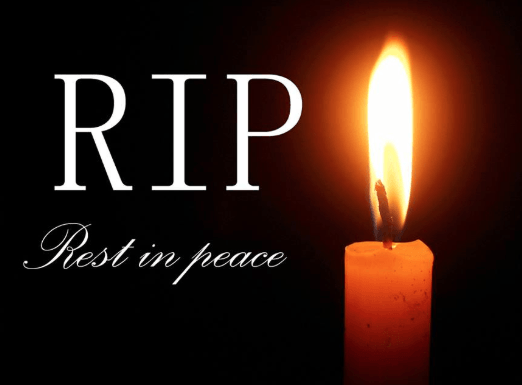Sex education will lower the Triple Threat for teens, health experts say

Is it a curse? Is it culture, poverty or recklessness?
These are questions on the lips of fighters against the Triple Threat in Homabay County – where the government and partners have pitched tent for the last two days, in a bid to get the right messaging to the residents.
From 27.5 per cent HIV prevalence in 2009 to 15.2 per cent in 2023, the county was celebrating a milestone, emerging from a dark tunnel, only to be confronted by a new challenge.
“From 17, 000 deaths in 2009 to 4,000 last year, we are seeing progress, but our concern now is around a specific cohort of 10-19 year olds becoming pregnant,” CEC Member for Health, Roselyn Omollo told journalists during a science cafe on Wednesday in Homabay town.
She noted that the county – which has always had grim indicators in the three vices; HIV infections, teenage pregnancies and gender-based violence – has been making progress since 1999 when the first HIV clinic was established. It was the second after Nairobi.
However, the latest growth in the number of children having children is a major cause for concern and calls for totally new strategies to end teenage motherhood.
“If we are talking about a population of 100 girls, the prevalence rate is five per cent, meaning that out of 100 girls, three have been; either affected or infected by the triple threat,” she said.
She explained that this can either be by being pregnant as an adolescent, has suffered gender-based violence (GBV) or is infected with HIV.
“Or sometimes all three. So the picture is really grim, but the biggest worry is this menace seems to be cyclical, you find a 13-year-old girl has a baby,” she pointed out.
A small study the county conducted in Ndhiwa sub-county six months ago, according to Omollo showed that there were women who were great-grandmothers at 39 years old.
“That means they had a baby at a very tender age, and that baby too could have had a baby, what one would call traditionally a curse when something happens in a community or family repeatedly. One starts thinking what could be wrong,” she said.
In three months alone, between January and March, there were reported 421 cases of pregnancies involving 10-29-year-olds in Ndhiwa, Suba and Kindu.
Evade triple threat
And now based on these findings, health experts say there is a need to have comprehensive sexuality education in schools to help fight the Triple Threat among teenagers, adolescents and young adults.
“Hold kidogo (a little bit) so that you achieve that age where you will be able to carry pregnancy,” this is the message experts want taken to schools in a concerted effort to provide information needed by the children, to evade the triple threat.
Subsequently, the National Syndemic Disease Control Council (NSDCC) has cautioned that failure to address responsive sex in the demographic is likely to result in an endemic problem, despite the country working towards ending HIV by 2030.
The Council’s head of County Programs, Dr Douglas Bosire said Kenya is currently observing a worrying trend of infections reported among adolescents that “threaten gains made”.
According to Bosire, the country is at a point of demographic transition of HIV from the older population to the younger.
Young population
Ministry’s data shows that in 2023, the country recorded 22,154 new HIV infections, out of which 41 per cent occurred among young persons aged between 15 and 24 years.
In the same year, about 3,200 children aged between 10 and 19 years were getting infected with the virus.
“When these children get infected with the virus at an early age, yet they are supposed to be in school, grow to be productive citizens, we lose demographic dividends of the young population as a country,” he said.
Dr Bosire said there is a worry when you look at the syndemic factors that drive up the cases.
“We find that there are indicators which are showing that young children are engaging in unprotected sex more than they were doing before,” he said and argued that equipping them with knowledge on the transition that takes place in the body is necessary respectively in a socially, religious and cultural context.
Dr Bosire said to record wins, however, slight they might be, a need for a multi-sectoral approach is inevitable.
“Together with the Ministry of Education, we have committed that we must work together to make sure that we give age-appropriate human, health, and sexual education to children who are in schools,” added Bosire.
He said to end new HIV infections in children, adolescents and young adults, fighting the triple threat is key.
In ending the triple threat, he said the whole-society-nation approach is necessary because it brings together the government, private sector, civil society, development partners and other key stakeholders in addressing new HIV infections, unwanted pregnancies and sexual gender-based violence among adolescents and young people.
“This is important in the face of financing transitions, from donors to locally funded programs; epidemiological transitions, demographic transitions where we are getting young people heavily affected,” he noted.
In 2022, a total of 18, 443 lives were lost, meaning 50 were dying every day, and also 254, 000 of children, adolescents and young adults aged 10-19 became pregnant accounting for about 700 daily.
Also, at least 37 per cent of individuals who visited antenatal Clinics were children aged 10 and 17 years.
“As a nation, we have to pose and ask ourselves, is that healthy for us, is that the way to go? No, it is not the way to go” said Bosire.
He added, “Young children do not have negotiation power. They cannot negotiate for safer sex because perpetrators are older, and therefore hold more power than them in terms of energy physical, and financial strength. So, the young girls are at a point of disadvantage.”
Nationally, 10 counties contributed to 53 per cent of all new HIV infections, among them Nairobi, Kisumu, Homa Bay, Nakuru, Siaya, Migori, Uasin Gishu, Kakamega, Kajiado and Narok.












